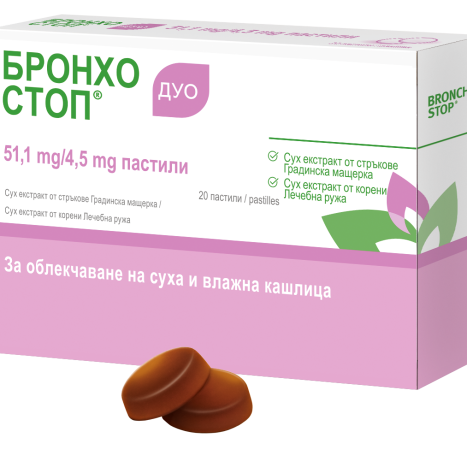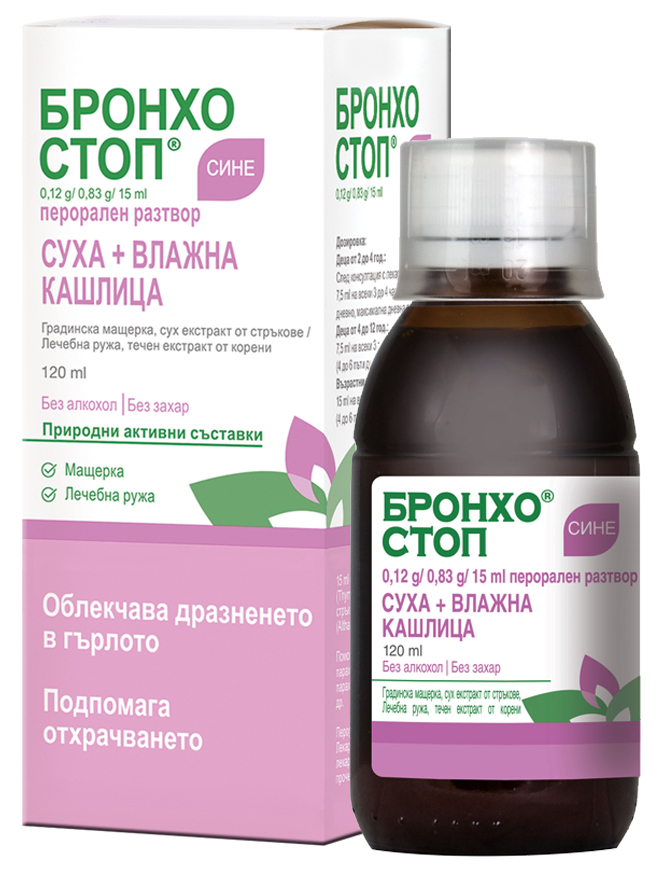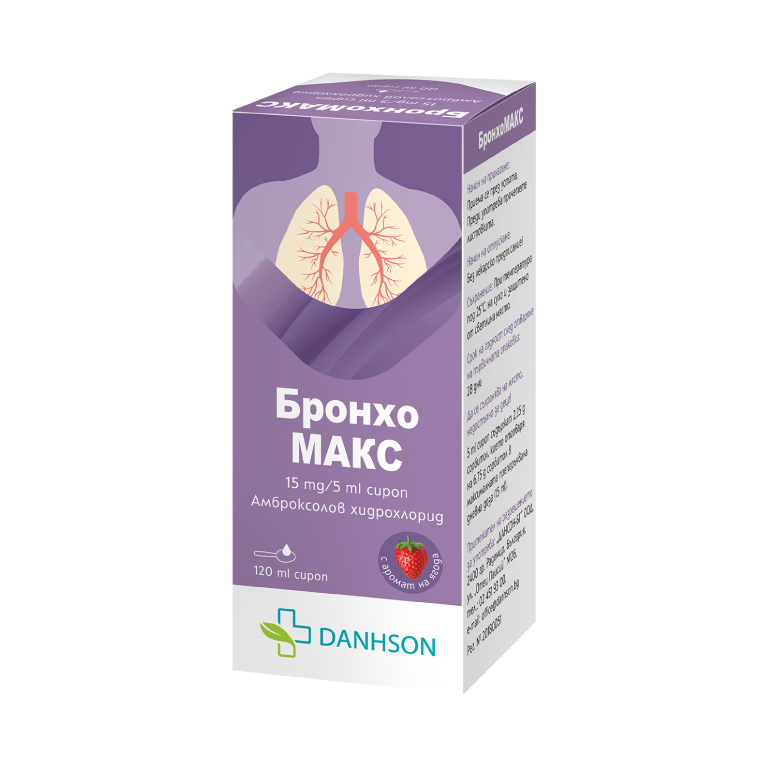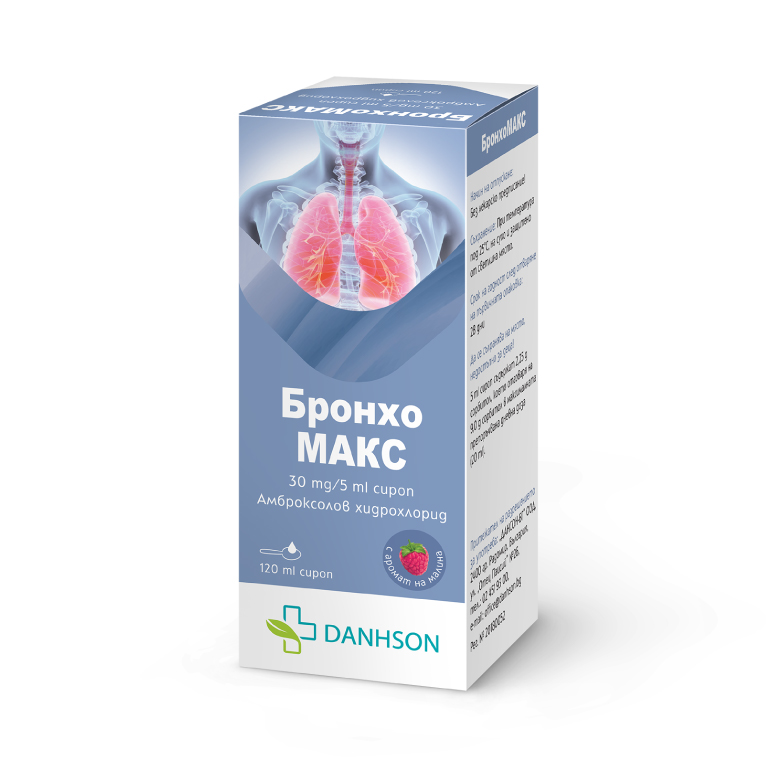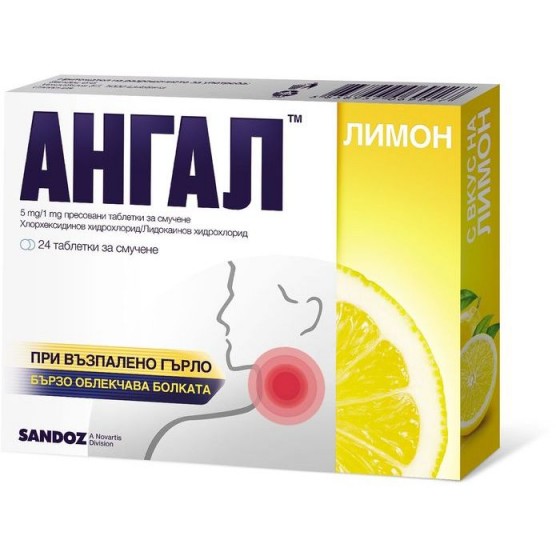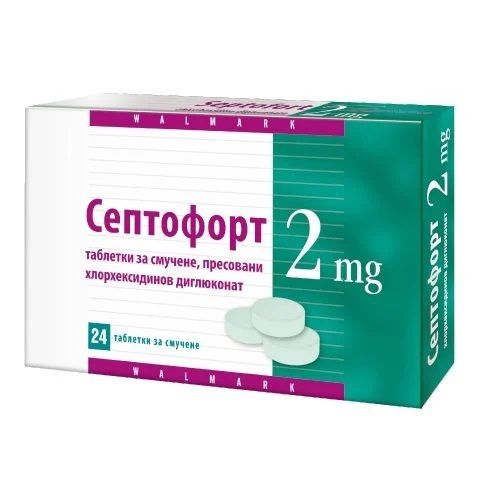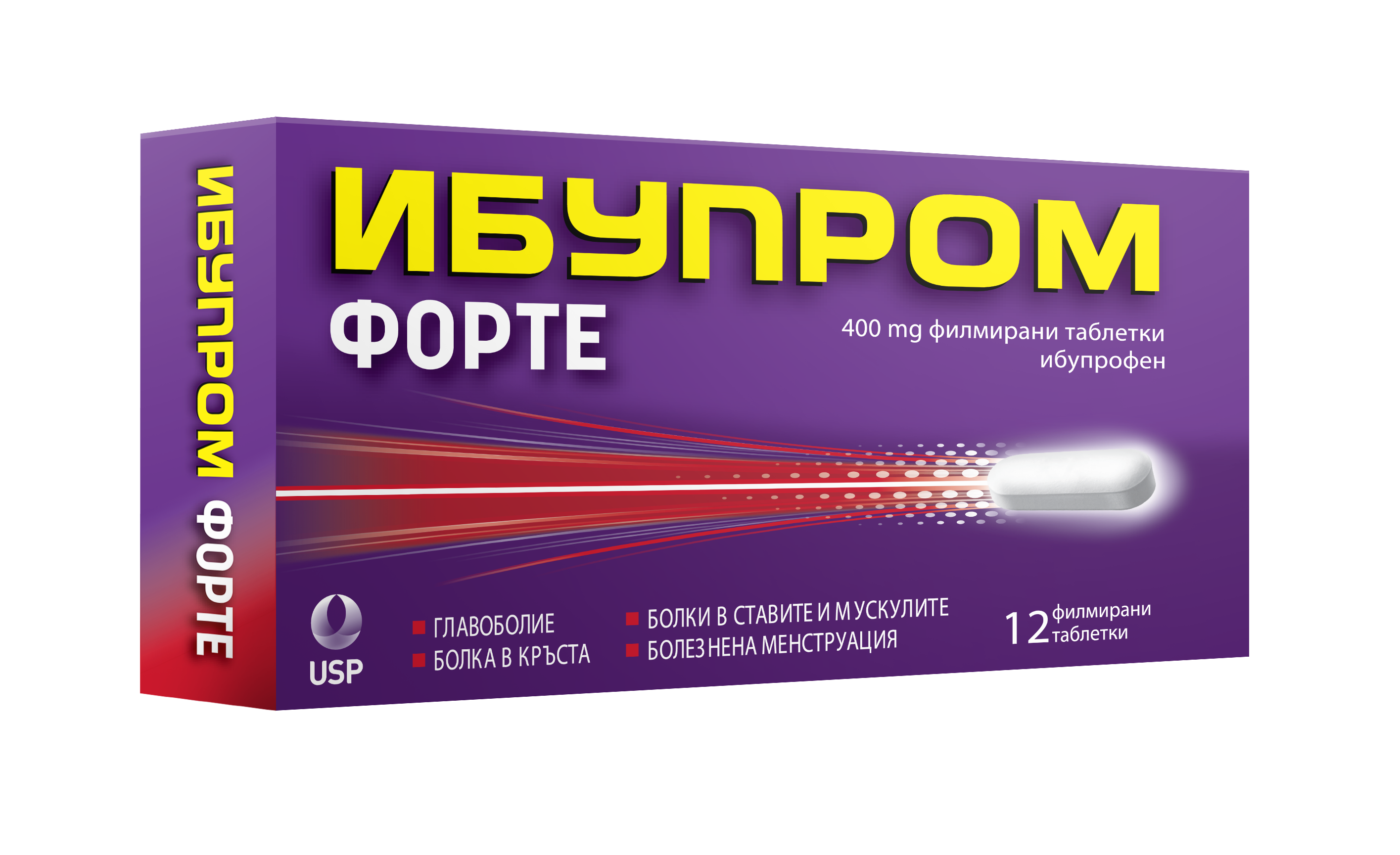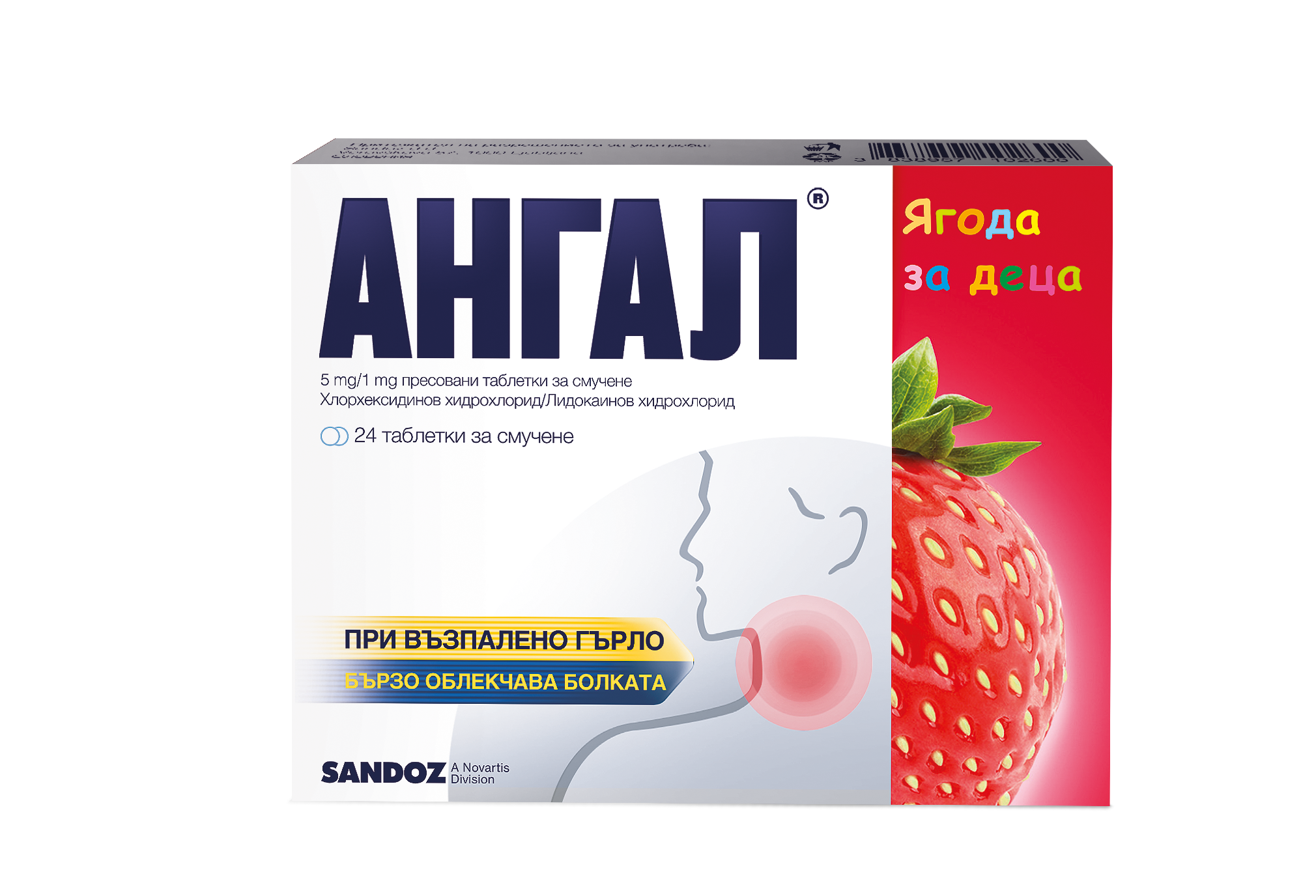BRONCHOSTOP DUO lozenges x 20
SUMMARY OF PRODUCT CHARACTERISTICS
1. NAME OF THE MEDICINAL PRODUCT
BRONCHOSTOP 59.5 mg lozenges
BRONCHOSTOP ® 59 . 5 mg lozenges
2. QUALITATIVE AND QUANTITATIVE COMPOSITION
1 BRONCHOSTOP lozenge contains:
59.5 mg Garden thyme ( Thymus vulg./ Thymus zyg . ) dry extract of stems ((7-13:1) extractant: water).
Excipients with known effect: 523 mg sorbitol (E420), 300 mg fructose, 5.53 mg propylene glycol (E1520) and 0.0018 mg benzyl alcohol (E1519).
For the full list of excipients, see section 6.1.
3. PHARMACEUTICAL FORM
Lozenges.
Hexagonal brown lozenges.
4. CLINICAL DATA
4.1 Therapeutic indications
A traditional herbal medicinal product used as an expectorant for coughs associated with colds.
The product is a traditional herbal medicinal product for use in the specified indications, based entirely on long-term use.
4.2 Dosage and administration
Dosage
Adults and adolescents over 12 years of age :
When needed, 1 to 2 lozenges in the mouth to suck every 3 to 4 hours (4 to 6 times daily).
Children aged 6 to 12 years :
When necessary, 1 lozenge in the mouth to suck every 3 to 4 hours (4 to 6 times daily).
Children under 6 years old :
Due to the lack of data and the risk of accidentally swallowing the entire lozenge, use in children under 6 years of age is not recommended.
Duration of application
If symptoms worsen or do not improve within 7 days, a doctor should be consulted.
4.3 Contraindications
Hypersensitivity to the active substances, to other plants of the Lamiaceae family or to any of the excipients listed in section 6.1.
4.4 Special warnings and precautions for use
In case of fever, shortness of breath or purulent expectoration, a doctor's consultation is necessary.
This medicinal product contains 523 mg of sorbitol and 300 mg of fructose in each lozenge, corresponding to approximately 0.1 carbohydrate units. This should be taken into account in patients with diabetes mellitus. This medicinal product should not be taken by patients with hereditary intolerance to fructose.
to fructose. The additive effect of concomitantly administered products containing sorbitol (or fructose) as well as dietary intake of sorbitol (or fructose) should be considered.
The sorbitol content of oral medicinal products may affect the bioavailability of other oral medicinal products administered concomitantly.
Sorbitol may cause gastrointestinal discomfort and a mild laxative effect.
This medicine contains 5.53 mg of propylene glycol in each lozenge.
This medicine contains 0.0018 mg of benzyl alcohol (E1519) in each lozenge. Benzyl alcohol may cause allergic reactions.
This medicine contains less than 1 mmol sodium (23 mg) per lozenge, i.e. essentially ‘sodium-free’.
Children under 6 years old :
Due to the lack of data and the risk of accidentally swallowing the entire lozenge, use in children under 6 years of age is not recommended.
4.5 Interaction with other medicinal products and other forms of interaction
No interaction studies have been conducted.
4.6 Fertility, pregnancy and lactation
Due to lack of sufficient data, use during pregnancy and breastfeeding is not recommended.
There is no evidence of effects on fertility.
4.7 Effects on ability to drive and use machines
Does not affect the ability to drive and use machines.
- Adverse drug reactions
Hypersensitivity reactions and stomach disorders have been observed with the use of medicinal products containing thyme. The frequency is unknown.
Reporting suspected adverse reactions
Reporting of suspected adverse reactions after authorisation of a medicinal product is important. This allows for continued monitoring of the benefit-risk balance of the medicinal product. Healthcare professionals are asked to report any suspected adverse reactions via
Executive Agency for Medicines
8 Damyan Gruev Street
1303 Sofia
Tel.: +359 2 8903417
website: www.bda.bg
4.9 Overdose
No cases of overdose have been reported.
5. PHARMACOLOGICAL PROPERTIES
5.1 Pharmacodynamic properties
Pharmacotherapeutic group: Expectorants, ATC code: R05CA
Thyme constituents aid in the expectoration of tough, viscous mucus through their secretolytic, secretomotor, and bronchospasmolytic properties. Thyme essential oil, which is also contained in the dry extract, has antiseptic properties.
5.2 Pharmacokinetic properties
Not required.
5.3 Preclinical safety data
No particular risk to humans is expected when used correctly.
6. PHARMACEUTICAL PARTICULARS
6.1 List of excipients
Gum Arabic (E 414)
Fructose
Sorbitol 70%, liquid (non-crystallizing) (E 420)
Maltodextrin
Citric acid, anhydrous (E 330)
Saccharin sodium (E 954)
Aronia flavor (containing propylene glycol (E1520))
Berry flavor (containing propylene glycol (E1520) and benzyl alcohol (E1519)) Paraffin, light liquid
Purified water
6.2 Incompatibilities
Not applicable
6.3 Shelf life
3 years
6.4 Special storage conditions
Store below 25°C.
Store in the original packaging in a place protected from light and moisture.
Keep out of the sight and reach of children.
- Type and contents of the package
PVC/PE/PVdC/Alu blister packs of 20 or 40 lozenges. Not all pack sizes may be marketed.
6.6 Special precautions for disposal and handling
There are no special requirements.
7. MARKETING AUTHORISATION HOLDER
Kwizda Pharma GmbH
Effingergasse 21
1160 Vienna
Austria
8. MARKETING AUTHORISATION NUMBER(S)
No. II - UR - 38085/07.06.2017
Reg. No. 20120188
9. DATE OF FIRST AUTHORISATION/RENEWAL OF THE AUTHORISATION
March 30, 2012/June 7, 2017
10. DATE OF TEXT UPDATE
07/2021


